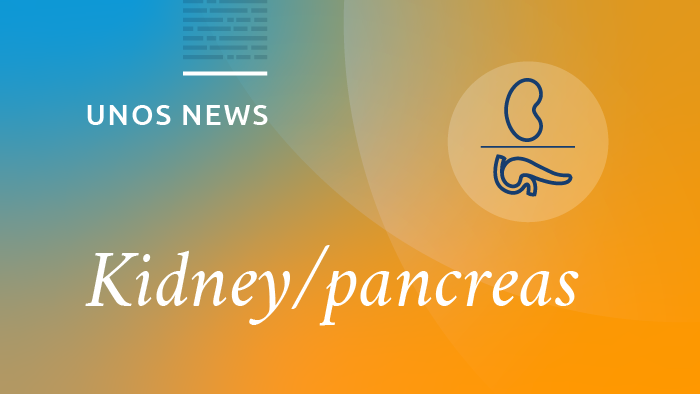Given the importance of addressing issues of geographic distribution in all organ policies, we want to give you more information about the kidney/pancreas initiative. We will continue to update you periodically as events warrant.
A memo from: Nicole Turgeon, M.D., Chair of the OPTN/UNOS Kidney Transplantation Committee and Jon Odorico, M.D., Chair of the OPTN/UNOS Pancreas Transplantation Committee
To: Kidney and Pancreas transplant program directors and administrators and OPO executive directors.
Background
You have already received some general updates from OPTN/UNOS Board leadership on the overall issues of geographic distribution. In short, HRSA has directed the OPTN to develop policies to replace the Donation Service Area (DSA) and region as units of organ distribution with areas that meet provisions of the OPTN Final Rule and principles adopted by the OPTN/UNOS Board in June.
It is important that we address this within the established OPTN/UNOS policy development process. If we cannot, it makes it much more likely that future issues of similar importance will be decided by legal or regulatory means, which may not reflect the expertise and input of the entire donation and transplant community.
Timeline and process
Our two committees are working together on a proposal to revise kidney and pancreas distribution under the guidance of the OPTN/UNOS Executive and Policy Oversight Committees. You may be familiar already with the work in progress on liver and intestine distribution, which is proceeding on a faster timeline.
We are working on a timeline that will include public comment in the regularly scheduled winter/spring cycle and a proposal to bring to the OPTN/UNOS Board in June 2019. This is the same timeline being used to update distribution policies for thoracic organs and vascular composite allografts (VCA).
Below are key policy development milestones as we know them at this point. We will update you with any new or changed dates.
September 2018 – Modeling request to the SRTR
December 7, 2018 – Modeling results available
December 2018 – Public comment proposal finalized
Jan. 21 – March 22, 2019 – Public comment period
June 10-11, 2019 – OPTN/UNOS Board meeting
Frameworks being modeled
Our individual committees, and a work group representing both committees, have met a number of times by teleconference over the last few months. In September we sent to the SRTR, for kidney/pancreas simulated allocation modeling (KPSAM), a series of alternatives to guide a policy proposal. We expect to receive the modeling results in December and will share them with you when available.
Because of the timeframe for all of these efforts, the frameworks we recommended for modeling were developed in parallel with the proposed geographic frameworks recently sent for public comment. Our work, however, has been informed by the discussion to date about the geographic principles and the recommended frameworks.
In the immediate term, we are pursuing distribution based on elements of two different distribution frameworks. One framework involves fixed distance (concentric circle) from the donor hospital. The second is a hybrid of the concentric circles and continuous approaches, where all candidates within a circle(s) receive allocation priority based on the current classification tables but with an additional layer of points related to proximity to the donor hospital. While we are focusing on this model to meet the expedited timetable described above, we may consider future policy refinements, such as a full continuous framework proposal, consistent with the outcome of the Board’s adoption of one or more frameworks. We have asked for modeling results for various alternatives as summarized here.
As with any simulation modeling, we expect the results to address the scope and direction of impacts more than detailed predictions for all circumstances. Modeling may not represent all behaviors involved in the current transplant process and certainly can’t account for potential future behavioral changes. In addition, we may find that the modeling may yield results that affect kidney, pancreas and SPK differently. That said, we will apply the expertise on our committees and seek your input through public comment to determine the best alternative given the current assumptions and timeline. As with any policy, we will closely study its results once implemented and consider any necessary corrections to improve it going forward.
For questions or further information
If you’d like to know more about existing policies, contact your Regional Administrator. You can also find additional resource information and updates on the web pages of both the Kidney Committee and the Pancreas Committee. If you’d like to know more about projects or proposals our committee continues to discuss, contact your regional representative to the committee, or send an e-mail to [email protected] or [email protected].

